

7 Ways Technology is Changing How Art is Made. Where would the Impressionists have been without the invention of portable paint tubes that enabled them to paint outdoors?

Who would have heard of Andy Warhol without silkscreen printing? The truth is that technology has been providing artists with new ways to express themselves for a very long time. Still, over the past few decades, art and tech have become more intertwined than ever before, whether it’s through providing new ways to mix different types of media, allowing more human interaction or simply making the process of creating it easier.
Case in point is a show titled “Digital Revolution” that opened earlier this summer in London’s Barbican Centre. The exhibit, which runs through mid-September, includes a “Digital Archaeology” section which pays homage to gadgets and games that not that long ago dazzled us with their innovation. Paint or Paint App? Value of Creating Digital Vs. Traditional Art. While it may be easy to imagine how iPads can support classroom studies with reading, history, or science, some of the most groundbreaking — and creative — work with digital tools may be happening in arts classes.
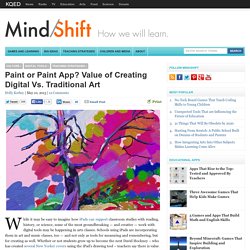
Schools using iPads are incorporating them in art and music classes, too — and not only as tools for measuring and remembering, but for creating as well. Whether or not students grow up to become the next David Hockney – who has created several New Yorker covers using the iPad’s drawing tool – teachers say there is value to learning to create using digital tools, especially when blended with more hands-on means of expression. Susan Sonnemaker, a middle school chorus and band teacher at San Francisco Day School, uses school-provided tablets in limited amounts throughout the year. “You can create something digitally that would be impossible to create by hand. Conversely, you can create something by hand that you cannot replicate digitally.” Related. Here Is Why USB Drives Are Buried In Walls All Across New York. Did you know that USB Drives are embedded in walls, buildings and curbs in Big Apple?
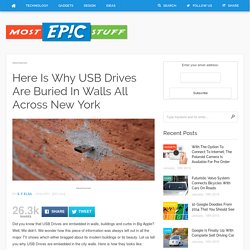
Well, We didn’t. We wonder how this piece of information was always left out in all the major TV shows which either bragged about its modern buildings or its beauty. Let us tell you why USB Drives are embedded in the city walls. Here is how they looks like: Aram Bartholl came up with this idea for an art project called “Dead Drops” in order to create an anonymous, offline file-sharing network in public space. Aram, a Berlin based artist who came up with the project during his stay in New York. The idea is pretty unique and fun but your laptop may get scratches or a broken USB port. The response was overwhelming so much so that the artist even made a dedicated website for Dead Drop Flash Drives. What the F**k is Digital Art. Join Jenny Judova (founder of Art Map London) on a quest to figure out what the hell is digital art as she explores the digital art scene online, and offline in London.
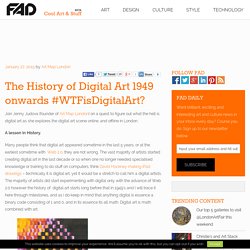
A lesson in History. Many people think that digital art appeared sometime in the last 5 years, or at the earliest sometime with Web 2.0, they are not wrong. The vast majority of artists started creating digital art in the last decade or so when one no longer needed specialised knowledge or training to do stuff on computers, think David Hockney making iPad drawings – technically it is digital art, yet it would be a stretch to call him a digital artists. The majority of artists did start experimenting with digital only with the advance of Web 2.0 however the history of digital art starts long before that in 1949’s and I will trace it here through milestones, and as i do keep in mind that anything digital is essence a binary code consisting of 1 and 0, and in its essence its all math. Médiation culturelle et nouvelles technos. À propos – We Love Art. Les musées à l'ère numérique. Fleur Pellerin plaide pour un marché unique du numérique.
VIDÉO - La ministre de la Culture veut éviter que les acteurs français du secteur ne soient défavorisés face aux acteurs extra-européens comme Netflix.
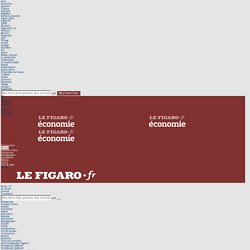
Vendredi, Fleur Pellerin, ministre de la Culture et de la Communication, a ouvert le Forum d'Avignon, qui se penchait pendant une journée sur l'enjeu grandissant des données culturelles. Nouvelle ministre de la Culture et ancienne ministre du Numérique, Fleur Pellerin est particulièrement attachée au développement des initiatives culturelles autour des données culturelles. Elle a annoncé que le ministère de la Culture et toutes les institutions qui lui sont rattachées, dont la Bibliothèque nationale de France, vont mettre leurs données culturelles à disposition du public sur le portail data.gouv.fr.
L'utilisation des données mises à disposition du public, ou «open data», est un véritable enjeu de croissance. Fleur Pellerin plaide pour un marché unique du numérique. Les réseaux sociaux « culture », un nouvel espace de dialogue. Souplesse, réactivité, simplicité...
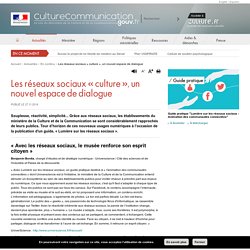
Grâce aux réseaux sociaux, les établissements du ministère de la Culture et de la Communication se sont considérablement rapprochés de leurs publics. Tour d’horizon de ces nouveaux usages numériques à l’occasion de la publication d'un guide, « Lumière sur les réseaux sociaux ». « Avec les réseaux sociaux, le musée renforce son esprit citoyen »